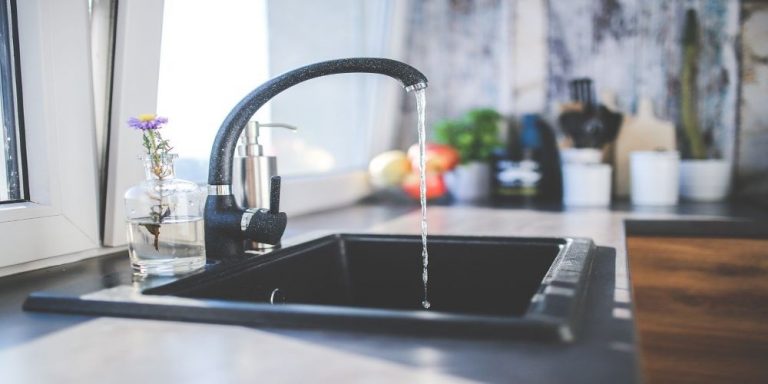Why Does My Faucet Whistle – How To Fix It?
Disclosure: Faucetshowerguide.com is reader-supported. We may receive commissions from purchases made via our links at no additional costs to you.
A faucet making high-pitched noise is not a common thing. It doesn’t occur in most sink faucets. A whistling faucet is very annoying. It won’t concentrate you on the cooking. Water doesn’t whistle itself, when something comes into the part of the water flow, water creates whistling noise.
Why does my faucet whistle? How to fix a whistling faucet and stops its noise? If you want answers to these questions, you are in right place. Making a faucet silent is economical plumbing work.

On Sale
Moen Adler Faucet With Power Boost Technology
Highly reflective finish, Power Clean technology, easy movement, and secure docking of the pulldown spray head
Why Does My Faucet Whistle and Make High-Pitched Noise?
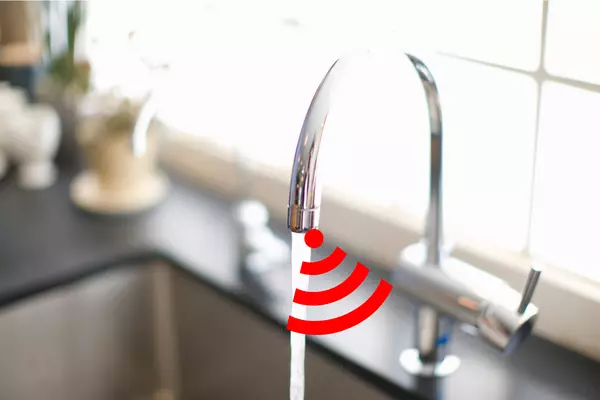
A whistling issue occurs more due to hot water. People really take stress when the faucet whistles. It makes the environment in the house irritating.
There are several different causes for a whistling faucet. When water flow vibrates, it creates whistling noise. Here we are narrowing down the possible cause of the whistling faucet.
Dislodged Washer
High-pitched whistle noise in the faucet occurs due to dislodged or incorrect-fitting washer. With time washer gets damaged due to the movement of the handle. It creates space around the washer which makes noise when water passes.
High Water Pressure
If a faucet whistles due to high water pressure, you will listen to whistling in more than one faucet in the house. The high pressure of the water makes water flow fast so water creates a whistling sound when it passes from corners or joints in the faucet.
Use a pressure meter to find the water pressure of the house water. 50 to 60 psi water pressure is normal. Use a pressure-reducing valve to slow down the water pressure.
Build Up of Mineral Deposits
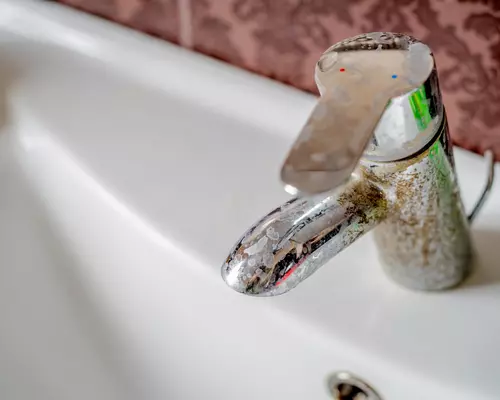
If you have hard water, mineral deposits definitely will be around the faucet. Deposits are also built inside the faucet.
When buildup inside the faucet, restricts the water flow, water creates noise. You should use a filter to prevent buildup in the faucet or use hard water faucets. Build-up doesn’t only creates noise but also damages the faucet body.
Clogged Aerator
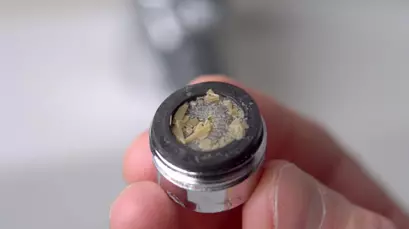
An aerator is used to make water flow smoothly. Its holes slow down the water flow and spread the water into many small streams. So, the water flow becomes gentle.
But with time, holes in the aerator get clogged due to hard water deposits.
Most of the time, hot water easily creates hard water deposits on the aerator holes. Due to hot water, things expand. When these things pass from aerator holes, they start sealing off the aerator screen and holes. When water passes through these blocked holes, it whistles.
How Do I Stop My Faucet From Whistling?
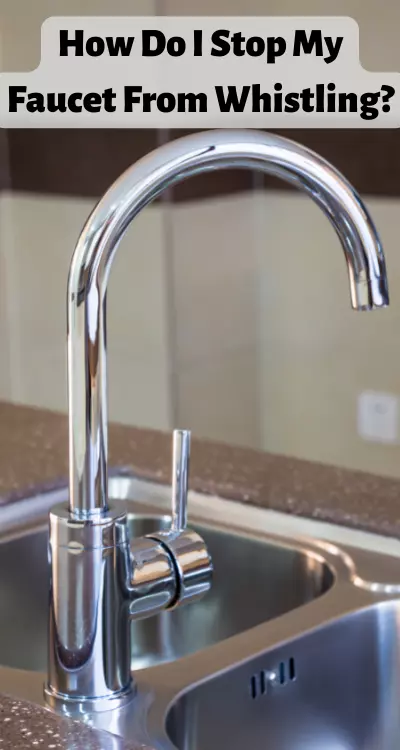
Fix Aerator Issue
What you’ll need:
- A screwdriver
- A Channellock plier
- Vinegar
- Toothbrush
If an aerator is a problem, either you can clean it or buy a new one. They are cheap enough so buying a new one is a good idea.
But if you want to use an old one, here is the process to clear the aerator and stops the whistling sound.
Wrap some tape on the faucet tip to prevent the finish of the fixture. Now use a Channellock to remove the aerator.
The aerator shapes the water stream but it also restricts the water flow.
If you want high water flow, you can remove the aerator. Without the aerator, the pot will be filled quickly. But it is not advisable because if you don’t use an aerator, it’s a high chance that calcium deposits build up in the sink. You can also use a screwdriver to pull out the aerator.
Cleaning the aerator is not too complicated.
Take vinegar and soak the aerator into it for 15-30 minutes according to stubborn deposits. After a few minutes, you will see deposits in the vinegar.
Now rinse the screen with water. If you still see deposits, take a toothbrush and dip it into vinegar and rub it on the aerator holes. Rub it for a few minutes, until all holes are opened.
Replace The Washer
To replace the fixture washer, you need to open the faucet.
Use a sharp object to remove the cap of the handle. Remove the screw of the handle with a screwdriver. Now you can see the washer.
Remove the washer and check its condition. If the washer is in the good condition, it means its fitting was not right. Fit the washer perfectly.
If the washer is in damaged condition, you will need to replace it. The washer is also not expensive and easily available in any plumbing store.
Get a new washer and install it and reattach the handle.
Clean Mineral Deposits
Vinegar or clr is good to clean mineral deposits. For better results, remove the faucet and open its parts and let them sink into the vinegar for the whole night. The next morning, clean the tap with water and reinstall it.
Reduce The Water Pressure
Reducing the water pressure is not a big task. A water pressure gauge valve to reduce the water pressure. You can order it from any online store.
Install it at starting of the water supply of the house. So, it will slow down the water pressure of the whole house. If you only want to reduce the water pressure of a specific faucet then install the pressure gauge near the faucet.
Final Words
A whistling faucet is not liked by anyone. But now after reading this guide, you can fix the faucet whistle problem. Whistling faucet solutions are quick and cheap. You can fix the whistle issue by yourself.

Meet Ralph Matthews, father of 2 cute daughters and a skilled plumber with over 10 years of experience in the industry. Ralph has particular expertise in repairing any type of faucet and has helped countless homeowners and businesses solve their plumbing problems with his expert knowledge and attention to detail.
Recommended By Faucetsshowerguide's Team
Best Kitchen Faucets of 2025: Sleek, Durable & Worth Every Penny Check Our Review
Best Touchless Kitchen Faucets for Effortless Cooking Check Our ReviewBest Touchless Bathroom Faucets That Add Luxury & Hygiene Check Our Review



